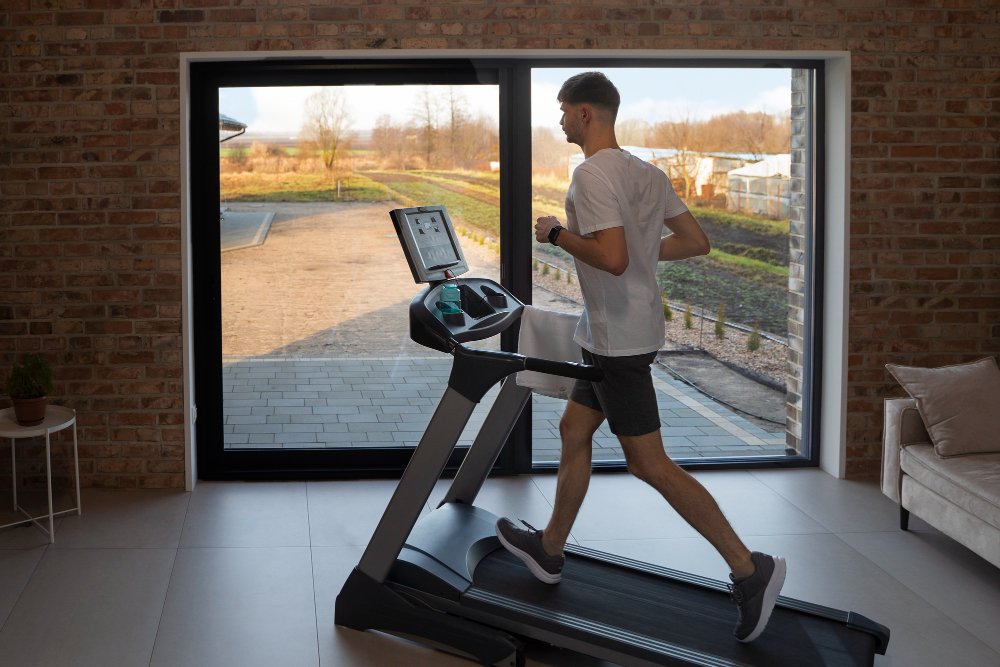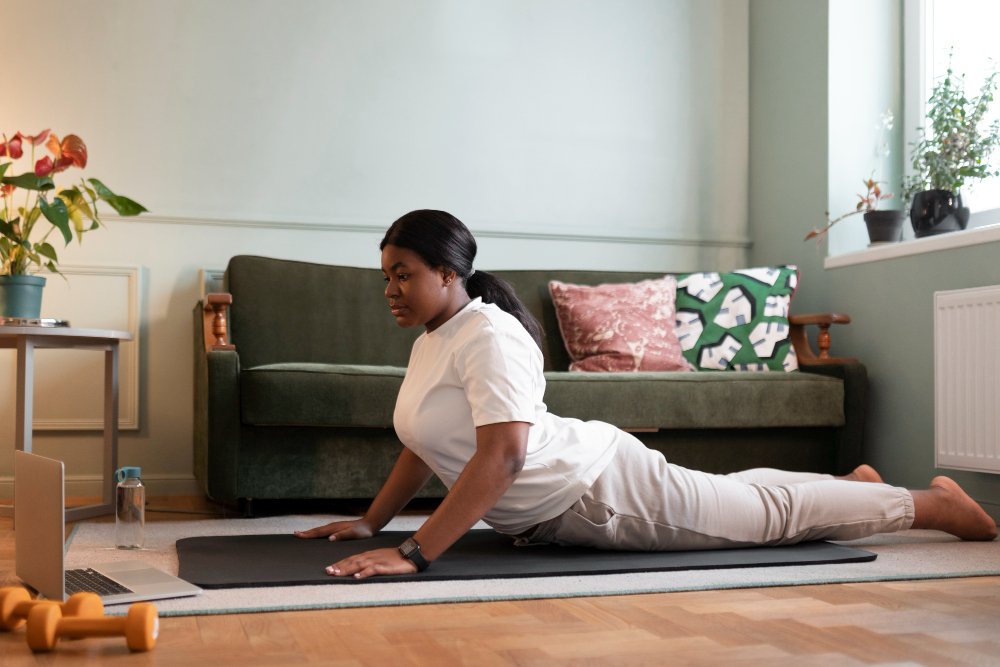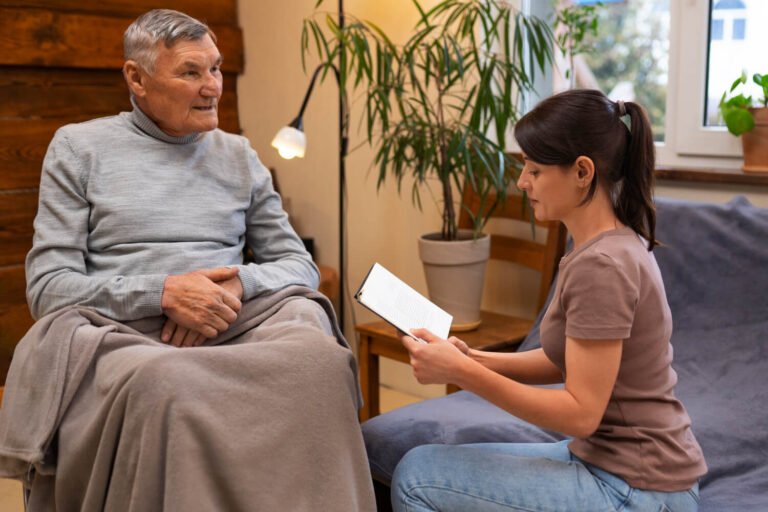How to Get Moving and Reduce Your Caregiving Stress

Caring for a loved one can bring daily stress, exhaustion and emotional strain. If you consistently put your own needs aside to focus on others, it can eventually lead to burnout.
One simple but powerful tool for stress relief is exercise. Moving your body can also strengthen your emotional resilience.
Want to kick-start your exercise program? Consider these 13 affordable fitness products that can help relieve stress.
Why Exercise Matters for Family Caregivers
Family caregiving can often feel like a 24/7 job. You may be juggling doctor visits, daily care routines and household tasks. Exercise might feel impossible to fit in, but it plays a vital role in your well-being.
According to the World Health Organization, people generally don’t move enough to promote good health. About 31% of adults and 80% of adolescents don’t meet the recommended levels of physical activity.
Research shows that physical activity lowers stress hormones like cortisol. It also boosts endorphins. Endorphins are the “feel-good” chemicals in your brain. Even small amounts of movement can help clear your mind, improve your mood and give you more energy for the day ahead.
Think of exercise as a gift to yourself. By caring for your body, you’re better prepared to care for your loved one.
Stress Relief Through Movement
One of the main benefits of exercise for caregivers is stress relief. When you’re overwhelmed, your body holds onto tension. Movement helps release that built-up stress.
Walking, stretching or even dancing to your favorite song can calm racing thoughts and relax tight muscles. Regular physical activity also helps regulate sleep, which is often disrupted by caregiving responsibilities. A short daily workout may help you fall asleep faster and stay asleep longer.
The good news is you don’t need to spend hours at the gym. Ten to twenty minutes of consistent movement each day can make a difference.
How Exercise Combats Stress: What Science Says

Exercise does more than just build muscle or burn calories. It rewires your brain and body to handle stress better.
Here’s what happens when you move your body:
- Endorphins increase. These “feel-good” chemicals reduce pain and boost happiness. That’s sometimes referred to as a “runner’s high.”
- Cortisol drops. Gentle movement like stretching lowers cortisol, the body’s main stress hormone.
- Systems sync up. Your heart, lungs, muscles and brain practice working together This can reduce physical symptoms of stress like high blood pressure or tension.
- Sleep improves. Regular movement helps regulate sleep patterns disrupted by caregiving stress.
- Mental clarity returns. Exercise acts like “meditation in motion,” giving your brain a break from racing thoughts.
In fact, studies show that people who exercise regularly are less likely to develop depression or anxiety. Even small amounts of physical activity offer protective benefits.
Exercise as Emotional Support

Caregiving can be emotionally draining. Feelings of guilt, frustration and isolation are common. Exercise creates a healthy outlet for these emotions.
Physical activity encourages mindfulness and can help you stay grounded in the present moment. Outdoor exercise, such as walking in nature, can lift your mood and reduce feelings of loneliness.
Many caregivers also find group exercise classes or walking groups helpful. Being part of a community provides support and encouragement. Group exercises remind you that you are not alone in your caregiving journey.
Practical Tips for Caregivers to Get Moving

Here are some practical ideas to get your body moving:
- Start small. Choose activities you enjoy and can realistically fit into your day.
- Use what you have. Chair stretches, bodyweight exercises or even gently running in place can all be done at home.
- Combine activities. You can listen to an audiobook or pray while walking to make it meaningful.
- Schedule movement. Add exercise to your calendar and treat it as if it were a doctor’s appointment.
- Involve your loved one. Gentle stretches or short walks together can benefit both of you.
The key is consistency, not perfection. Every bit of movement adds up.
Structured Breathing: A Quick Win When You Feel Overwhelmed
Sometimes, you may feel too tired or pressed for time to move. That’s okay. Breathwork can offer immediate relief.
Consider The Box Breathing Technique. If you’re pregnant or have an underlying health condition that makes holding your breath potentially unsafe, talk to your doctor before trying it.
Here’s how it works:
- Inhale for 4 seconds.
- Hold the breath for 4 seconds.
- Exhale for 4 seconds.
- Hold for 4 seconds.
- Repeat these steps 4 to 6 times.
You can practice this breathing technique anytime. Try it while sitting in traffic, in a waiting room or before bed. This method activates your body’s parasympathetic nervous system, which can lower stress quickly.
Make exercise part of your stress-reduction routine.

Exercise is more than a way to stay healthy. It’s form of self-care and a lifeline for caregivers facing daily stress. By moving your body, you release tension, boost your mood and restore your energy.
You don’t need to be perfect. Just start where you are to get moving. Your body will thank you.
Reducing Stress Through Exercise FAQ
How much exercise do caregivers need to reduce stress?
Even 10 to 20 minutes of daily movement can help. Aim for at least 150 minutes of moderate exercise per week, but start small and build up.
What types of exercise are best for caregiver stress?
Walking, stretching, swimming and dancing are all excellent forms of exercise. Choose what feels good and fits your lifestyle.
I don’t have time for exercise. What can I do?
Try body movement in short sessions. For example, instead of a 15-minute walk, break it up into three 5-minute walks throughout the day.
Can I involve my loved one in exercise?
Yes. Gentle walks, chair exercises or stretching together can benefit both of you physically and emotionally.
How does exercise help with caregiver sleep problems?
Exercise reduces stress and helps regulate your body’s natural rhythms, leading to deeper and more restful sleep.






